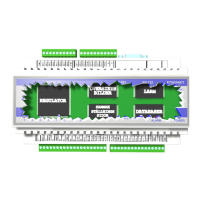18
132
18 - External units
18�1�2 WMShare
WMShare allows a WMPro to share channel values with other WMPros over the Ethernet or Internet.
Communication is based on Ethernet or Internet. For example you could connect an outdoor sensor
to a WMPro and allow other WMPros to access the same temperature reading from there. To improve
cooperation between systems you could also increase the number of signals shared.
In the WMPro that will share the values, you need to dene keys, i.e. the name of the value and the
channel containing the value. They can then be accessed without a password by external units using
the WMShare interface in other devices.
The rate at which values can be accessed depends in part on the number of units involved. However,
the system is not intended for frequent updates. There is no need to access an outdoor temperature
more than once a minute. You can try to update values as often as once per second, but there is no
guarantee that the actual rate will be this fast, and there would be a high processor workload.
18�1�3 AeACom
AeACom (Abelko embed-
ded Architecture Communi-
cation) is the plug-and-play
protocol used for units
connected to the WMPro
expansion port.
It is a proprietary protocol for Abelko units only.
AeACom diers from the protocols supported by GFBI in that there
is no need to congure the address, and the update times are highly
predictable. The protocol is used for plug-and-play units requiring no
conguration.
18�1�4 Channel connections, emails and group scripts
You can connect up to 100 external units to a WMPro. But this is not
much use unless you can do something with the all that information.
Channel connections are an easy way of linking values from an exter-
nal unit to channels and vice versa. You can dene up to 50 channel
connections.
Imagine you have an M-Bus system with lots of meters for internal
billing – you could create an email containing values for all meters of
a certain type, and send it to a supervisory system.
AeACom
AeACom is a protocol supporting
plug-and-play functionality for
connected units.

